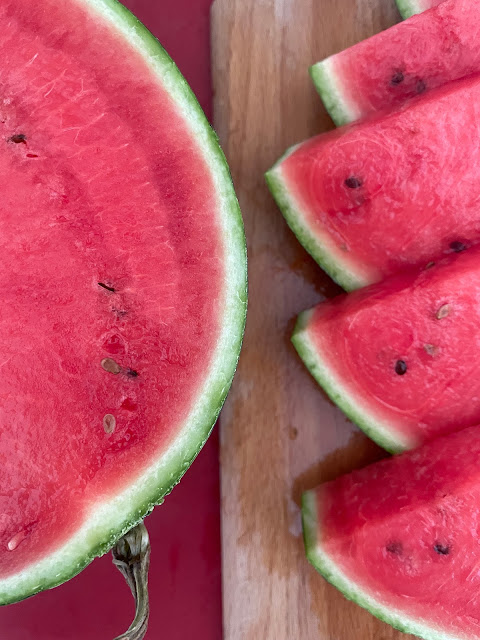Like no other fruit, watermelon is considered by many to be a perfect Summer fruit. Thanks to its high water and mineral content, water melon is a tasty thirst quencher. This quality was greatly appreciated as far back in history as Ancient Egypt and Ancient China.
Watermelon (Citrullus lanatus) belongs to the family Cucurbitaceae. It is a vine-like flowering plant that most probably originated in Southern Africa. The plant produces large fruits whose flesh is pink or dark red when ripe. The fruits are covered with thick, green rind. There are more than 1200 varieties cultivated all over the world.
Watermelon is rich in nutrients:
- vitamins, especially the vision supporting vitamin A, the immune system modulating vitamin B6 and the immune system boosting vitamin C
- minerals, especially magnesium and potassium
- amino acid citruline
- carotenoids lycopene and beta carotene
- flavonoids lutein, zeaxanthin and cryptoxanthin
- tripterpenoids
As mentioned before, because of its very high water content, watermelon
is a wonderful thirst quencher. In Traditional Chinese Medicine the
red flesh of the fruit is considered to be cooling and used to purify
blood and dispel symptoms of internal and external heat. A very popular
watermelon lozenges are prescribed to cure sore throat. To address
different symptoms, Chinese doctors use all parts of the fruit,
including the rind and the seeds.
Watermelon is a perfect anti-aging superfood. It has few calories, but
is very rich in phenolic compounds that include flavonoids, carotenoids,
and tripterpenoids. These compounds help fight inflammation and
provide protection against free radicals.
The carotenoid lycopene that gives watermelon its red color, is a very effective free-radicals scavenger. In fact, watermelon contains higher levels of lycopene than any other fresh fruit or vegetable - 15 to 20 mg per two-cup serving. The content depends on the ripeness of the fruit.
- the production of pro-inflammatory messaging molecules
- the expression of such enzymes as the cyclo-oxygenase and the lipoxygenase that can lead to increased inflammatory response
- the activity of molecular signaling agents like nuclear factor kappa B (NFkB)
Citruline also has the ability to flushe the kidneys and the liver of stored aluminum. Aluminum can be damaging to the cells. It not only enters our bodies from the environment, but is also a byproduct of protein breakdown within the body.
Watermelon seeds are also beneficial to health. They contain B Vitamins; incredibly bio-available iron and zinc; magnesium; omega 6 fatty acids; and the cardiovascular system supporting amino acid arginine. They also contain lysine, tryptophan, and glutamic acid.
The nutrient content makes watermelon one of the healthiest foods available to us. Although a ripe watermelon contains sugar, the fruit has a law glycemic index which means that it will not cause rapid spikes in blood glucose levels. Some animal studies suggest that watermelon juice may even have a positive effect on blood sugar metabolism.
Watermelon is a good source of amino acids cystein, glutamate and glycine that are necessary for the synthesis of glutathione. Glutathione is the body own antioxidant, detox agent and immune system modulator. Glutathione helps the body effectively excrete mercury, aluminum and pesticides, and improves the efficacy of vitamins C and E in the body.
When fully ripe, watermelon is an alkaline-forming fruit. This fact alone makes watermelon incredibly beneficial to health as diseases such as cancer can only thrive in an acidic environment.
By Dominique Allmon
*This information is for educational purpose only. It is not meant to diagnose or cure a disease.
